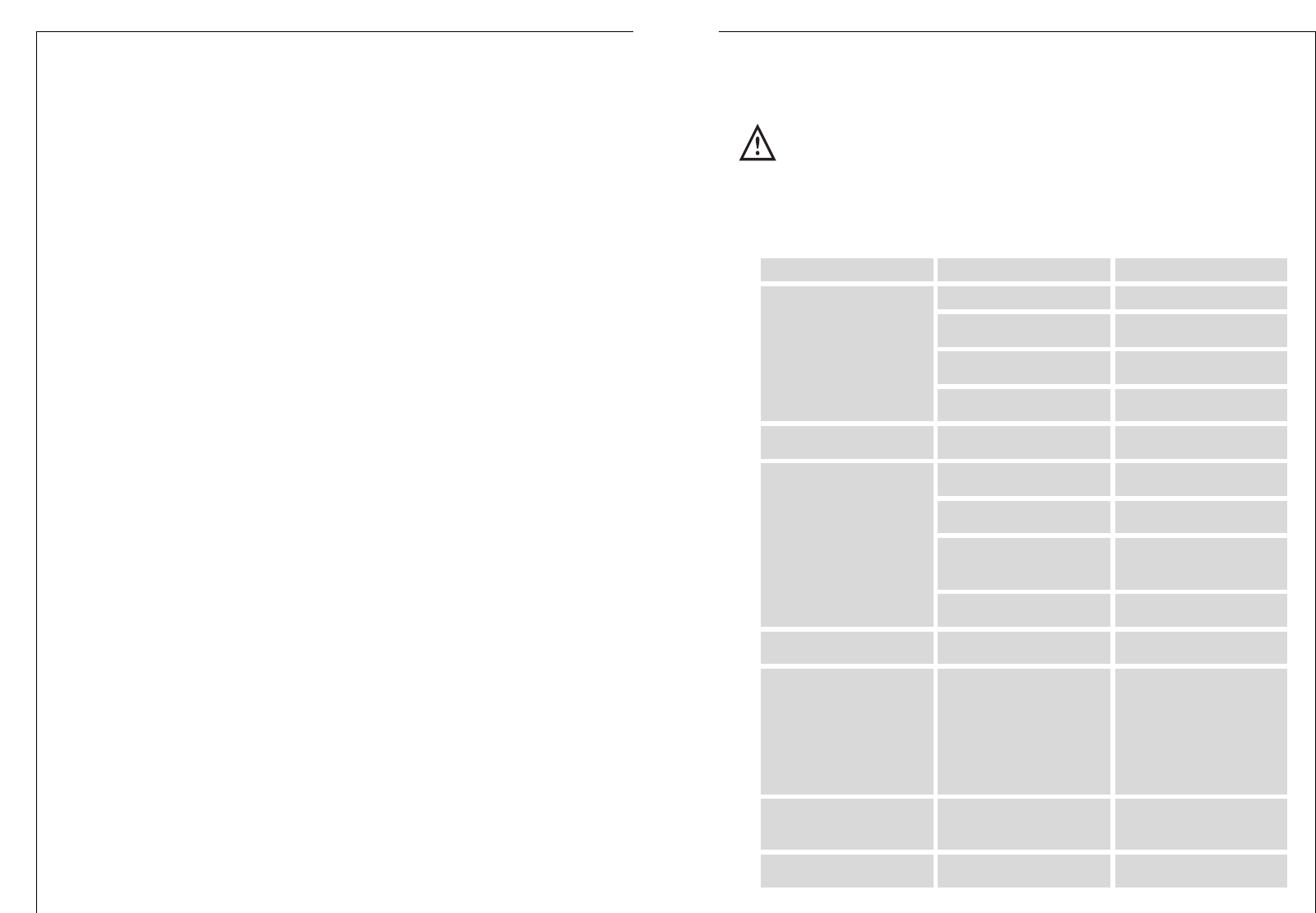
10
Fresh food refrigeration
To obtain the best performance:
• do not store warm food or evaporating liquid in the refrigeator
• do cover or wrap the food, particularly if it has a strong flavour.
• Position food so that air can circulate freely round it.
Useful hints:
Meat (all types): wrap in polythene bags and place on the glass shelf above
the vegetable drawer(s)
For safety, store in this way only one or two days at the most.
Cooked foods, cold dishes, etc: these should be covered and may be placed
on any shelf.
Fruit and vegetables: these should be thoroughly cleaned and placed in the
special drawer(s) provided.
Butter and cheese: these should be placed in special airtight containers or
wapped in aluminium foil or polythene bags to exclude as much air as pos-
sible.
Milk bottles: these should have a cap and should be stored in the bottle
rack on the door.
Bananas, potatoes, onions and garlic, if not in airtight containers, must
not be kept in the refrigerator.
Freezing and storing frozen food
You can use your freezer for freezing fresh food yourself.
Important!
• The temperature in the freezer compartment must be –18 °C or colder
before freezing food.
• Please observe the freezing capacity given on the rating plate. The free-
zing capacity is the maximum quantity of fresh food that can be frozen
within a period of 24 hours. If you wish to freeze food several days in a
row, please observe a maximum capacity of only 2/3 to 3/4 of that on the
rating plate. The quality of the food is best preserved when it is frozen
right through to the core as quickly as possible.
• Allow warm food to cool down before freezing. The warmth will cause
increased ice formation and increase the power consumption.
15
Heavy build up of frost, possi-
bly also on the door seal.
Door seal is not air tight (pos-
sibly after reversing the door).
Carefully warm the leaking
sections of the door seal with
a hair dryer (not hotter than
approx. 50 °C). At the same
time shape the warmed door
seal by hand until it sits cor-
rectly.
The food is too warm.
Interior lighting does not work.
The appliance is near a heat
source.
Temperature is not properly
adjusted.
Please look in the "Initial Start
Up" section.
Light bulb is defective.
Please look in the "Changing
the Light Bulb" section.
Turn the temperature control
knob to a colder setting.
Door was open for an exten-
ded period.
Please look in the "Installation
location" section.
A large quantity of warm food
was placed in the appliance
within the last 24 hours.
Only open the door as long as
necessary.
Symptom Possible Cause Remedy
Appliance does not work.
Appliance is not switched on Switch on the appliance.
Mains plug is not plugged in
or is loose.
Insert mains plug.
Fuse has blown or is defective.
Check fuse, replace if neces-
sary.
Socket is defective.
Electrical malfunctions are to
be corrected by an electrician.
Appliance cools too much. Temperature is set too cold.
Turn the temperature control
knob to a warmer setting.
Something Not Working
If the appliance is not functioning correctly, please carry out the following
checks before contacting your local AEG Service Force Centre.
Warning!
Repairs should only be carried out by qualified service engineers. Repairs
carried out by inexperienced persons may cause injury or serious malfunc-
tioning.
The compressor starts after a
period of time.
See the "Cleaning and Care"
section.
This is normal, no error has
occurred.
The compressor does not start
immediately after changing
the temperature setting.
Water on the floor or on sto-
rage shelves.
Water drain hole is blocked.














